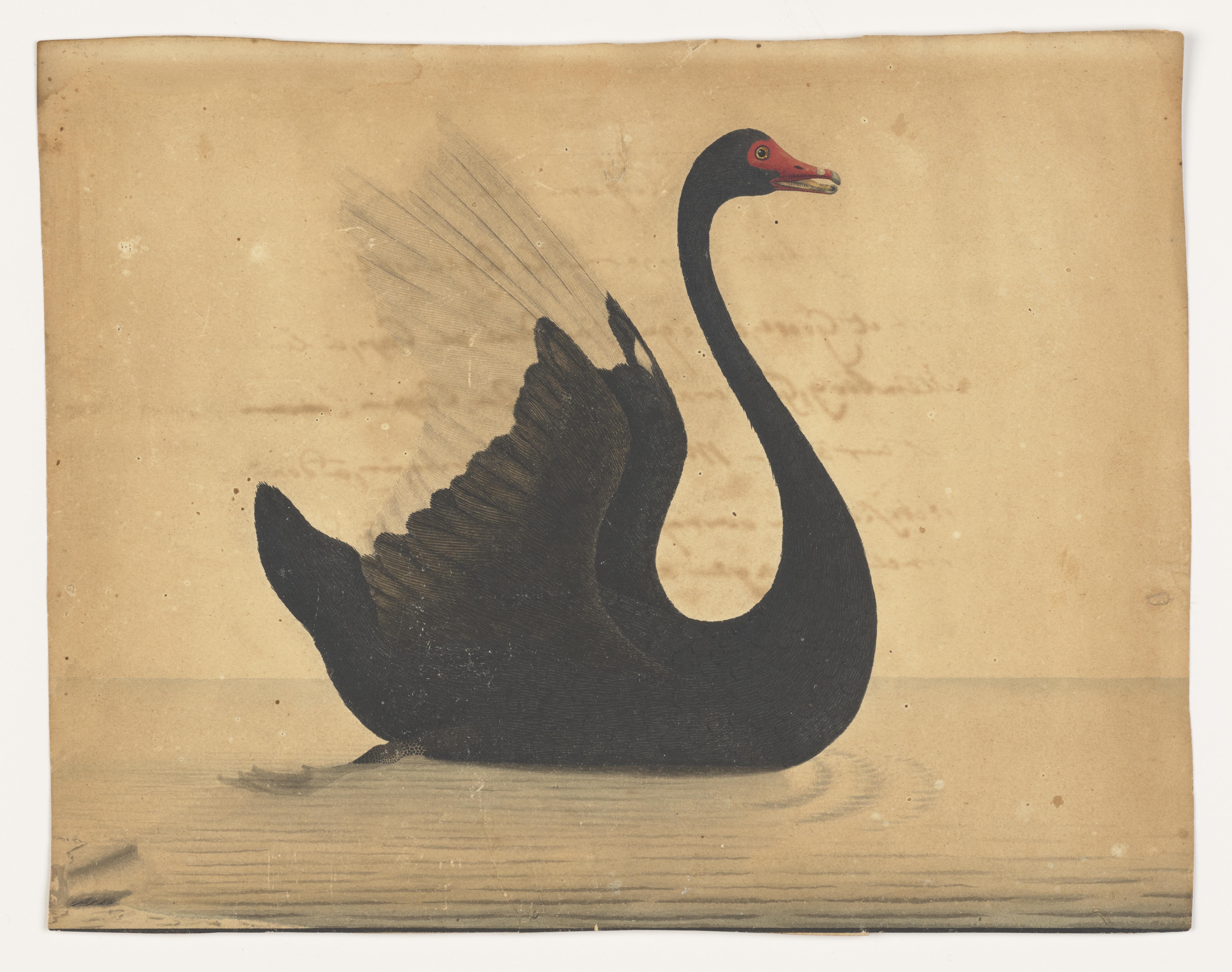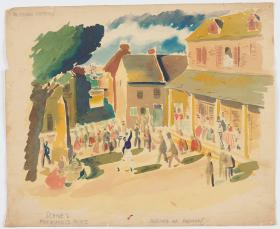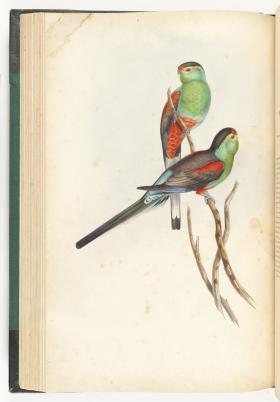Up close, the exquisitely fine rendering of this rare eighteenth-century watercolour drawing is breathtaking. The figure of a black swan sits proudly erect, afloat, its raised wings revealing white flight feathers. Depicted in profile like a heraldic symbol, it seems to embody the unknown artist’s wonder for this elegant animal, then considered the most exotic of all Australian birds. Tantalising traces of an inscription on the back of this painting suggest there may be more to its story than first meets the eye.
The idea of a black — as opposed to a white — swan had captivated popular imagination since Roman times. The black swan, or ‘rara avis’, became a metaphor for something that didn’t exist — until the myth-busting discovery in the 1600s of this ‘impossible bird’ by Dutch mariners, off the coastline of what would become Western Australia.
Turning this drawing over reveals a note, handwritten in French. Its message is fragmented because the picture was trimmed for framing at some point, but several names jump out: Gordon, Weber, Cok, Clerk, Goure — the misspellings cannot mask their significance. The text states that the swan picture was a gift to the anonymous inscriber by ‘Madame Gordon, wife of the Commandant of the garrison at Cape Town’. Dutch soldier, naturalist and explorer Colonel Robert Gordon (1743–1795) was indeed in charge of the garrison there from 1780 to 1795. Swiss-born Susanna Nicolet (1748–1831) is known to have sailed from Amsterdam on the De Parel, arriving at Cape Town in 1780, where she and Gordon were married two weeks later.
The inscriber claims that the drawing is the work of John Webber, an English artist on Cook’s third Pacific voyage, and recalls dining with other members of that expedition. But here the inscriber’s recollections become problematic; Captains Cook, Clerke and Gore did call at Cape Town on their way to the Pacific in late 1776. However, Cook and Clerke had died by the time of the expedition’s return in early 1780. The author does credit, correctly, Gordon’s international reputation as an important collector of natural history specimens and drawings, gathered during his own expeditions and others’.
The Gordons also met and befriended Governor Arthur Phillip and other officers of the First Fleet, including David Collins, John Hunter, Philip Gidley King and surgeon John White, during their stopover at the Cape, in 1787.
The First Fleet’s subsequent arrival at Port Jackson ensured more European encounters with black swans. Hunter mentions the birds being ‘shot for the pot’ in January 1788, commenting that ‘the Black Swan … is about the size of the Common White Swan at Home & is good Meat’. Governor Phillip recorded his first sighting of this ‘very noble bird’ on 15 April, while exploring a saltwater lagoon near Manly with enthusiastic natural history collector John White, who remarks on the bird’s resemblance to that ‘rara avis of the ancients — a black swan’. The birds took to the air when several shots were fired and White observed that ‘their flight gave us an opportunity of seeing some white feathers, which terminated the tip of each wing; in every other part they were perfectly black’.
The excitement Europeans felt for Australia’s new and exotic natural world sparked a demand for visual evidence. Natural history drawings, living birds and skins were despatched from the fledgling colony to a fascinated Europe, prompting a frenzy of exchange and copying. It seems likely that on subsequent visits to the Cape, in 1789 and 1791, Captain John Hunter and midshipman artist George Raper gave Colonel Gordon the drawings of Australian birds and an eastern grey kangaroo that survive in his collection. Perhaps the swan drawing was chivalrous gift to their charming hostess?
Following the commandant’s death by suicide in 1795, Mrs Gordon returned to Europe with their sons, travelling first to London, where she hoped to publish or sell her husband’s journals and drawings. The Gordon collection of over 450 drawings was eventually purchased by the Duchess of Sutherland and remained with her descendants until its sale to the Rijksmuseum in 1914.
The whereabouts of the swan picture during the intervening two centuries — before it resurfaced on the art market last year — remains unknown.
Margot Riley is a Curator in Collection Acquisition and Curation.
This story appears in Openbook spring 2023.





